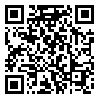BibTeX | RIS | EndNote | Medlars | ProCite | Reference Manager | RefWorks
Send citation to:
URL: http://irj.uswr.ac.ir/article-1-368-fa.html
Objectives: The aim of the present study was to assess the auditory lateralization ability in children with (central) auditory processing disorder.
Methods: Participants were divided in two groups: 15 children with Central Auditory Processing Disorder (8-10 years) and 80 normal children (8-11 years) from both genders with pure-tone air-conduction thresholds better than 20 dB HL bilaterally and interaural pure tone threshold difference better than 5 dB. All subjects had normal IQ and normal otoscopy: In the present study 9 imaginary positions were simulated in horizontal plane by Interaural Time Difference (ITD) and Interaural Intensity Difference (IID) to evaluate the auditory lateralization performance in normal and children with (central) Auditory Processing Disorder (C)APD. Lateralization performance were determined by ITD ranging from -880 to +880 microsecond and IID ranging from -10 to +10 dB for high pass and low pass noise (2 kHz cut off point). Boltzmann function was used to describe the auditory lateralization performance and Independent Samples T-test was used to compare the two groups.
Results: according to Boltzmann function two major types of abnormalities were revealed in the lateralization performances: 1- completely disoriented, 2- side-oriented. 86.6% of (C)APD children showed significant increase in mean of test errors compared with normal ones (P<0.001).
Discussion: The study supports the hypothesis that most children with (C)APD have poor auditory lateralization and abnormal processing of binaural cues.
دریافت: 1392/9/29 | پذیرش: 1392/11/5 | انتشار: 1392/12/10



